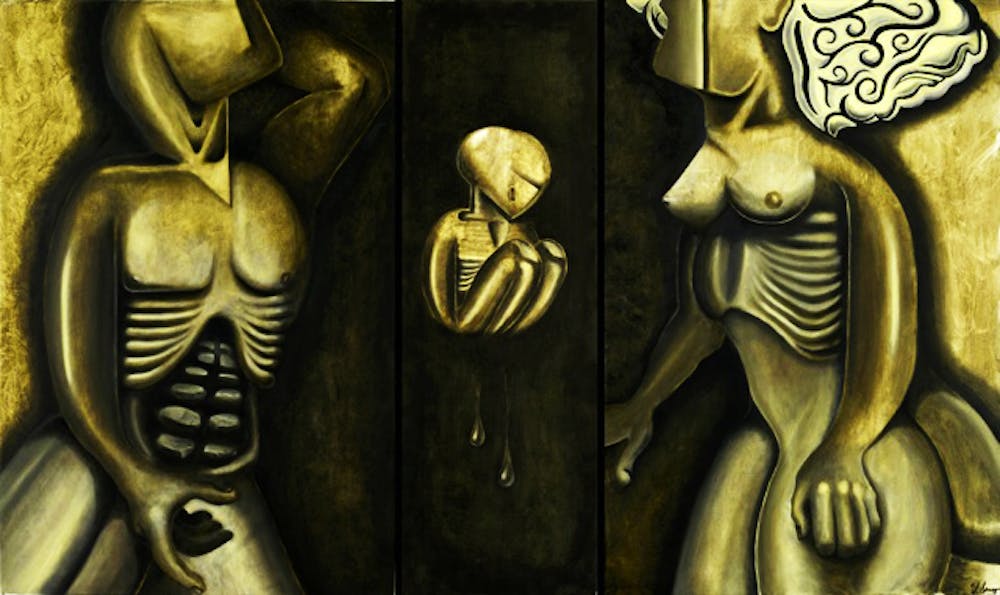Year: Class of 2016 Hometown: Brooklyn, NY Major: Visual Studies/Linguistics Website: vincentsnaggdesign.com
Street: What brought you to the field of graphic design? Did you start with fine arts? Vincent Snagg: When I was very young I loved creating drawings in pencil, and in that sense I started out as a fine artist. Yet I think my days of living in New York City really allowed me to concentrate on what graphic design was. I’d look at an advertisement and think to myself, who made this? Someone created this ad! I wanted to be the person behind these messages and ideas—the humble yet powerful artist.
Street: What kind of music do you listen to while you work? VS: Whatever gets me moving! I happen to listen to a lot of different genres, whatever gives me chills. I listen to reggae, Spanish pop, reggaeton, deep house, electro–house, trance, to name a few, and most recently moombahton, which is a mix of reggaeton and house music. I love fusions, and this is the perfect beat for me to move around to while working.
Street: From where do you draw your inspiration? Are there any particular graphic designers and/or artists that you like to borrow from? VS: I am frequently inspired when typographic elements are incorporated into fine arts work, much like what Hopper or Ed Ruscha, who had roots in commercial art, became famous for. Graphic designer Milton Glaser, creator of the “I Love New York” brand, inspires me because of his belief in the power of designers to provoke thought and bring about change through their graphic work. I highly recommend one of the books he co–authored, “The Design of Dissent.”
Street: You said that you feel that art in general should be thought–provoking and perhaps even politicized by nature. How does this idea manifest in some of your recent work? My work “Nativity” was inspired by David Alfaro Siqueiros, one of the three most famous Mexican muralists alongside Rivera and Orozco, and one of my favorite social realist painters. Siqueiros’ intense political background, which included being exiled and frequently incarcerated for his communist tendencies, resonates with Glaser’s idea that all art must be political in some way. His concern with the underrepresented members of society victimized by corruption and political power struck a parallel with my concerns in diversity awareness.
Street: Do you think your painting aesthetic seems to draw more heavily from graphic design influences or vice versa? VS: I think my design work actually influences my painting quite a bit. For the most part my painting incorporates a lot of symbolism, which is probably due to the graphic design–inspired notion that certain symbols are universally recognizable. Thus each element might represent an idea or concept that works together with the others to relate an idea.
Street: Tell us a little bit about your creative process. Do you know a work will involve mixed media before you begin or does it sort of evolve as you continue? VS: I usually don’t know at first. I’m definitely not the artist that has some ideal outcome in mind before starting. Mistakes and unintended occurrences are essential to everything I do. That said, it might sometimes just occur to me that something would look better with hand–written type, or that it may only achieve a certain intricacy if an idea was hand–illustrated. It’s usually trial and error. But when it works, it works.
Street: Where do you see your work taking you in the future? VS: I would love it if I could enter the fine arts world having graphic design as my platform for self–expression. Not in the way that, let’s say, Warhol commented on mass culture by imitating something that wasn’t art and then calling it art. I want that thing that somehow wasn’t art to somehow become the art. Maybe even usable art, art with a purpose. Is that even possible? If not that, I could be an art director!







